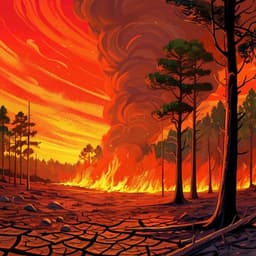
Environmental Studies and Forestry
Metal toxin threat in wildland fires determined by geology and fire severity
A. M. Lopez, J. L. Pacheco, et al.
This groundbreaking study by Alandra Marie Lopez, Juan Lezama Pacheco, and Scott Fendorf uncovers a hidden danger of catastrophic wildfires: the release of toxic chromium. As climate change fuels these fires, the carcinogenic hexavalent chromium (Cr(VI)) levels soar, posing a significant health risk through smoke and ash. Discover how this silent threat persists long after the flames are out.
~3 min • Beginner • English
Related Publications
Explore these studies to deepen your understanding of the subject.







